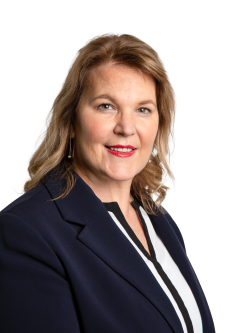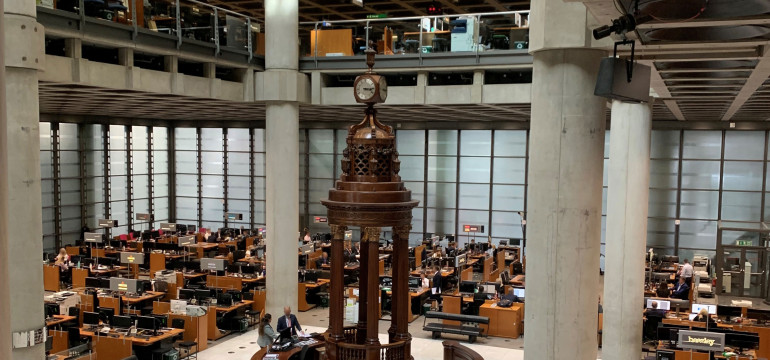Reinsurance market shows trust and confidence in EQC scheme
The international reinsurance world continues to show strong support and confidence in New Zealand’s natural hazard insurance scheme in a challenging reinsurance market, says Toka Tū Ake EQC chief executive Tina Mitchell.
strong support and confidence in New Zealand’s natural hazard insurance scheme in a challenging reinsurance market, says Toka Tū Ake EQC chief executive Tina Mitchell.
Mitchell recently returned from an intensive series of meetings with the world’s leading reinsurers in Europe to start the process of securing the annual reinsurance placement that supports the EQC scheme and enables New Zealand homeowners to access affordable home insurance.
“The insurance world has continued to absorb losses from natural disasters such as wildfires, floods and storms all over the world in the past year, so when we were in Europe, we heard how some of the market was reviewing its exposure to natural disasters ,” says Mitchell.
Mitchell says Toka Tū Ake EQC is fortunate to have a strong reputation internationally with our history of investing in science and research to better understand the risk New Zealand carries and the proactive steps the country has taken to reduce the impact of natural hazards.
Reinsurers also recognise Toka Tū Ake EQC for the wide range of perils it covers and that this supports the broad uptake of home insurance across our high-risk country, which in turn spreads the risks for reinsurers.
“The core purpose of our scheme is affordable insurance which enables over 90% of New Zealanders access to home insurance, which is unheard of in other high-risk countries,” says Mitchell.
She explains that the reinsurers recognise the coordination between Toka Tū Ake EQC and other government agencies in a major event. This has supported the enormous scientific understanding that has developed from New Zealand’s recent events that has been shared and used across the world.
It was clear from the comments made by reinsurers that they felt the changes to the EQC Act currently before Parliament had been carefully considered and well communicated to them.
Mitchell says that New Zealand also offers reinsurers and their investors diversification in the global market for property catastrophe reinsurance.
“Our risk level may be significant when we are confronted with a major event like the Canterbury earthquakes, but the occasions when we need reinsurance are more infrequent compared to other countries that are affected regularly,” according to Mitchell who adds that Toka Tū Ake EQC only had to call on the reinsurers twice since it started buying reinsurance in the late 1980s.
She explains that Toka Tū Ake EQC’s reinsurance carries an excess of $1.75 billion, which means that most natural hazard events are paid out by the Natural Disaster Fund, which is funded through homeowners’ EQC levies from their home insurance and underpins the EQC Scheme.
“The only time we had to call on our reinsurance was in Canterbury and the main reason to have reinsurance is for a significant but less frequent events” says Mitchell.
Mitchell says it was hugely important to be able to meet the key reinsurer personnel face-to-face.
“While the technical detail is important, personal relationships are just as vital in these interactions. They want to see what you stand for and find out what’s going on in each country. Equally, we gain a deeper understanding of our reinsurance partners and the strategy behind the decisions they are making to support Toka Tū Ake EQC.”
In London, Mitchell met with a number of the 28 separate Lloyd’s syndicates that support the Toka Tū Ake EQC programme.
“The Lloyd’s market has been a long-term supporter of Toka Tū Ake EQC, providing significant reinsurance capital following the Canterbury earthquakes and continues to be an important source of capacity for the programme.”
After the London stop, Mitchell attended an annual reinsurance industry conference in Monaco, where Toka Tū Ake EQC representatives were able to meet with many other major reinsurers of the global insurance world.
“The meetings in Monaco were a bit like organised speed dating. We met with more than 30 reinsurers in just over two days, with most meetings lasting only 30 minutes.
“This provided the chance for me to give a strategic overview of where Toka Tū Ake EQC is at and why it remains a great place to continue to invest and do business. Our brokers from Aon were there to support these discussions in relation to the reinsurance placement.”
The meetings in Europe have given Mitchell continued confidence of the ongoing support for the Toka Tū Ake EQC programme, following its record placement of $7.2 billion in 2022/23.
“Some firms have indicated that their investors in the current climate have less appetite to invest in natural catastrophe, but some reinsurers have signalled they will increase their involvement, so I am pretty confident as we start the renewal planning for next year,” says Mitchell.
The Toka Tū Ake EQC chief executive explains that for the coming few months the focus of her team and Toka Tū Ake EQC’s reinsurance broker will be on putting together a modelling and information pack to support the 2023/24 renewal.
This will include an assessment of housing growth in New Zealand, the likely impacts of inflation and other relevant material. The team will also be monitoring the outcome of two large reinsurance renewals for the US and European programmes on 1 January, and Japanese programmes on 1 April 2023.
Once the reinsurers have absorbed that briefing pack, negotiations start in February and March, before new agreements are usually finalised in May.
“It was really good to hear that our briefing packs are highly regarded and some of the biggest reinsurers even use them to train new underwriters.
“They clearly trust our expertise and our people, and it made me feel really proud of New Zealand and our EQC scheme to hear that from some of the most influential people in the industry,” says Mitchell.
The CEO points out that the cost of catastrophe insurance for homeowners in other high-risk countries can cost thousands a year, if it is even possible, compared to the $480 a year New Zealanders will pay for EQCover even with the EQC cap doubled to $300,000. The cost in other countries can be prohibitively high and means there is much lower insurance uptake than in New Zealand.
“We are fortunate to have a national scheme where everyone pays the same rate for a range of natural hazards, and we are proud to help New Zealanders get access to affordable insurance.”
Caption 1: Toka Tū Ake EQC Chief Executive Tina Mitchell.
Caption 2: The main trading hall at Lloyds in London, featuring the Lutine Bell which was salvaged from the HMS Lutine in 1858. The bell was traditionally struck once to mark the news of an overdue ship and twice for her return. It is now only rung on special occasions, most recently to mark the passing of Her Majesty Queen Elizabeth II.
